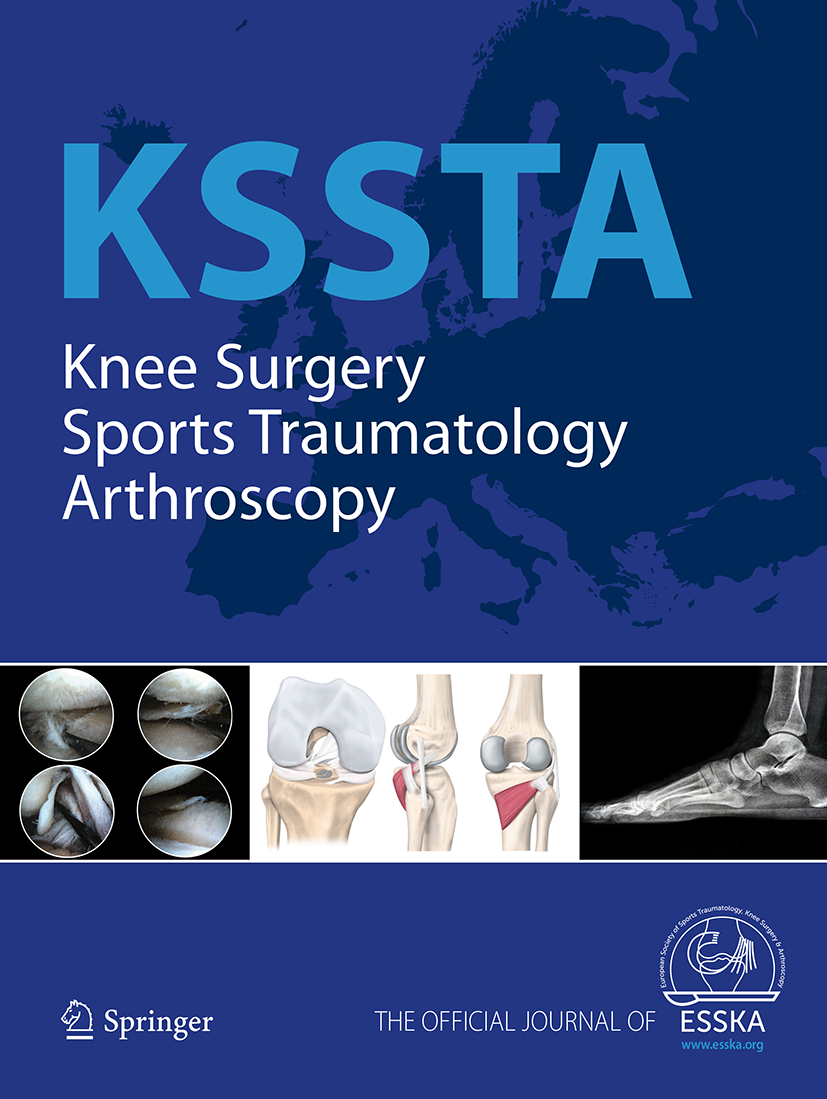
Adult stem cells do not appear to accelerate graft-to-bone healing in ACL reconstruction

Adult stem cells do not appear to accelerate graft-to-bone healing in ACL reconstruction
Is there a role for adult non-cultivated bone marrow stem cells in ACL reconstruction?
Knee Surg Sports Traumatol Arthrosc. 2014 Jan;22(1):66-71. doi: 10.1007/s00167-012-2279-9. Epub 2012 Nov 2.Synopsis
43 patients undergoing anterior cruciate ligament (ACL) surgery using a hamstring graft were randomly assigned to a stem cell or a control group to evaluate the effect of stem cells on graft-to-bone healing. In the study, adult non-cultivated bone marrow stem cells were harvested from select patients and intra-operatively delivered in and around the femoral end of the graft. Upon analysis, the non-cultivated bone marrow stem cells did not appear to advance graft-to-bone healing in ACL reconstruction at 3 months post-operative.
Was the allocation sequence adequately generated?
Was allocation adequately concealed?
Blinding Treatment Providers: Was knowledge of the allocated interventions adequately prevented?
Blinding Outcome Assessors: Was knowledge of the allocated interventions adequately prevented?
Blinding Patients: Was knowledge of the allocated interventions adequately prevented?
Was loss to follow-up (missing outcome data) infrequent?
Are reports of the study free of suggestion of selective outcome reporting?
Were outcomes objective, patient-important and assessed in a manner to limit bias (ie. duplicate assessors, Independent assessors)?
Was the sample size sufficiently large to assure a balance of prognosis and sufficiently large number of outcome events?
Was investigator expertise/experience with both treatment and control techniques likely the same (ie.were criteria for surgeon participation/expertise provided)?
Yes = 1
Uncertain = 0.5
Not Relevant = 0
No = 0
The Reporting Criteria Assessment evaluates the transparency with which authors report the methodological and trial characteristics of the trial within the publication. The assessment is divided into five categories which are presented below.
1/4
Randomization
4/4
Outcome Measurements
1/4
Inclusion / Exclusion
4/4
Therapy Description
3/4
Statistics
Detsky AS, Naylor CD, O'Rourke K, McGeer AJ, L'Abbé KA. J Clin Epidemiol. 1992;45:255-65
The Fragility Index is a tool that aids in the interpretation of significant findings, providing a measure of strength for a result. The Fragility Index represents the number of consecutive events that need to be added to a dichotomous outcome to make the finding no longer significant. A small number represents a weaker finding and a large number represents a stronger finding.
Why was this study needed now?
In anterior cruciate ligament (ACL) reconstruction, healing of the tendon graft to the bone is crucial for a successful surgery. Recent research has explored the use of growth factors and stem cells to improve and enhance osteointegration of the graft within the bone tunnel, and avoid complications such as tendon pullout out, which can occur even up to a few months postoperatively. The aim of this study was to determine if non-cultivated adult bone marrow mesenchymal stem cells (BMSCs) could enhance tendon-to-bone healing in the femoral tunnel following ACL reconstruction using a hamstring graft.
What was the principal research question?
Are adult non-cultivated bone marrow stem cells able to accelerate tendon-to-bone healing in the femoral tunnel, measured approximately 3 months after ACL reconstruction?
What were the important findings?
- On PDW-FatSat images, there was no significant difference between the experimental vs. control group in median SNR of the upper interzone [12.3 (7.6-14.6) vs. 10.6 (8.7-13.1)] and lower interzone [10.4 (8.3-13.3) vs.12.4 (10.6-13.4)] (p>0.05).
- On T1W-FatSat-Gad images, there was no significant difference between the experimental vs. control group in median SNR of the upper interzone [22.3 (17.5-27.8) vs. 22.5 (18.8-31.0)] and lower interzone [21.8 (18.1-26.1) vs. 24.5 (21.1-33.5)] (p>0.05).
- A graft biopsy from one patient in each group revealed no apparent differences in collagen amount, vascularity, and number of cells between samples. Both patients were chosen for biopsies because they required second-look arthroscopy for meniscectomy at 4 months.
What should I remember most?
From the results obtained in this study, graft-to-bone healing after ACL reconstruction does not appear to be expedited with the use of adjuvant adult non-cultivated bone marrow mesenchymal stem cells (BMSCs).
How will this affect the care of my patients?
While it appears stem cells do not accelerate graft to bone healing in ACL reconstruction, larger trials are required to confirm these results. Furhermore, it should be noted that MRI evaluation may not be sensitive enough to detect histological changes at the tendon-to-bone interface. Future studies are needed to further evaluate the efficacy of this augmentative therapy.
Learn about our AI Driven
High Impact Search Feature
Our AI driven High Impact metric calculates the impact an article will have by considering both the publishing journal and the content of the article itself. Built using the latest advances in natural language processing, OE High Impact predicts an article’s future number of citations better than impact factor alone.
Continue



 LOGIN
LOGIN

Join the Conversation
Please Login or Join to leave comments.